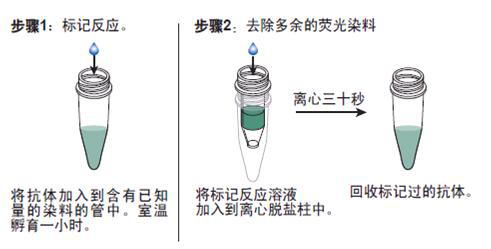
|

| 产地 | 进口、国产 |
| 品牌 | 上海莼试 |
| 保存条件 | Store at -20 °C |
| 货号 | CS10967 |
| 应用范围 | WB=1:100-500 ELISA=1:500-1000 IP=1:20-100 IHC-P=1:100-500 IHC-F=1:100-500 IF=1:100-500 |
| CAS编号 | |
| 抗体名 | Anti-RBPJK/RBP-J |
| 克隆性 | |
| 靶点 | 详见说明书 |
| 适应物种 | 详见说明书 |
| 形态 | 详见说明书 |
| 宿主 | 详见说明书 |
| 亚型 | IgG |
| 标识物 | 详见说明书 |
| 浓度 | 1mg/1ml% |
| 免疫原 | KLH conjugated synthetic peptide derived from human RBPJK |
产品订购信息:
英文名称 Anti-RBPJK/RBP-J
中文名称 Notch转录调控蛋白RBPJK抗体品牌
别 名 AI843960; CBF 1; CBF-1; CBF1; IGKJRB1; J kappa recombination signal binding protein; J kappa-recombination signal binding protein; J kappa-recombination signal-binding protein; KBF2; NY REN 30 antigen; RBP J kappa; RBP-J; RBP-J kappa; RBP-JK; Rbpj; RBPJK; RBPSUH; Recombining binding protein suppressor of hairless; Renal carcinoma antigen NY-REN-30; SUH_HUMAN.


浓 度 1mg/1ml
规 格 0.2ml/200μg
抗体来源 Rabbit
克隆类型 polyclonal
交叉反应 Human, Mouse, Rat, Dog, Pig, Cow, Horse, Rabbit
产品类型 一抗
研究领域 染色质和核信号 神经生物学 信号转导 干细胞 转录调节因子 表观遗传学
蛋白分子量 predicted molecular weight: 56kDa
性 状 Lyophilized or Liquid
免 疫 原 KLH conjugated synthetic peptide derived from human RBPJK
亚 型 IgG
纯化方法 affinity purified by Protein A
储 存 液 Preservative: 15mM Sodium Azide, Constituents: 1% BSA, 0.01M PBS, pH 7.4
Notch转录调控蛋白RBPJK抗体品牌 产品应用 WB=1:100-500 ELISA=1:500-1000 IP=1:20-100 IHC-P=1:100-500 IHC-F=1:100-500 IF=1:100-500
(石蜡切片需做抗原修复)
not yet tested in other applications.
optimal dilutions/concentrations should be determined by the end user.
保存条件 Store at -20 °C for one year. Avoid repeated freeze/thaw cycles. The lyophilized antibody is stable at room temperature for at least one month and for greater than a year when kept at -20°C. When reconstituted in sterile pH 7.4 0.01M PBS or diluent of antibody the antibody is stable for at least two weeks at 2-4 °C.
Important Note This product as supplied is intended for research use only, not for use in human, therapeutic or diagnostic applications.
产品介绍 Transcriptional regulator that plays a central role in Notch signaling, a signaling pathway involved in cell-cell communication that regulates a broad spectrum of cell-fate determinations. Acts as a transcriptional repressor when it is not associated with Notch proteins. When associated with some NICD product of Notch proteins (Notch intracellular domain), it acts as a transcriptional activator that activates transcription of Notch target genes. Probably represses or activates transcription via the recruitment of chromatin remodeling complexes containing histone deacetylase or histone acetylase proteins, respectively. Specifically binds to the immunoglobulin kappa-type J segment recombination signal sequence.
Function : Transcriptional regulator that plays a central role in Notch signaling, a signaling pathway involved in cell-cell communication that regulates a broad spectrum of cell-fate determinations. Acts as a transcriptional repressor when it is not associated with Notch proteins. When associated with some NICD product of Notch proteins (Notch intracellular domain), it acts as a transcriptional activator that activates transcription of Notch target genes. Probably represses or activates transcription via the recruitment of chromatin remodeling complexes containing histone deacetylase or histone acetylase proteins, respectively. Specifically binds to the immunoglobulin kappa-type J segment recombination signal sequence. Binds specifically to methylated DNA.
Subunit : Interacts with activated NOTCH1, NOTCH2 or NOTCH3. Interacts with MINT/SHARP. This interaction may mediate the recruitment of large corepressor complexes containing proteins such as HDAC1, HDAC2, NCOR2, SAP30, FHL1/KYOT2 and CIR1. Interacts with EP300, MAML1 and PTF1A. Interacts with Epstein-Barr virus EBNA2, EBNA3, EBNA4 and EBNA6. Interacts with RITA/C12orf52, leading to nuclear export, prevent the interaction between RBPJ and NICD product and subsequent down-regulation of the Notch signaling pathway. Interacts with SNW1.
Subcellular Location : Nucleus. Cytoplasm. Note=Mainly nuclear, upon interaction with RITA/C12orf52, translocates to the cytoplasm, down-regulating the Notch signaling pathway.
DISEASE : Adams-Oliver syndrome 3 (AOS3) [MIM:614814]: An autosomal dominant form of Adams-Oliver syndrome, a disorder characterized by the congenital absence of skin (aplasia cutis congenita) in combination with transverse limb defects. Aplasia cutis congenita can be located anywhere on the body, but in the vast majority of the cases, it is present on the posterior parietal region where it is often associated with an underlying defect of the parietal bones. Limb abnormalities are typically limb truncation defects affecting the distal phalanges or entire digits (true ectrodactyly). Only rarely, metatarsals/metacarpals or more proximal limb structures are also affected. Apart from transverse limb defects, syndactyly, most commonly of second and third toes, can also be observed. The clinical features are highly variable and can also include cardiovascular malformations, brain abnormalities and vascular defects such as cutis marmorata and dilated scalp veins. AOS3 patients manifest characteristic vertex scalp defects and terminal limb defects, but without congenital heart defects, other associated defects, or immune defects. Note=The disease is caused by mutations affecting the gene represented in this entry.
Similarity : Belongs to the Su(H) family.
Contains 1 IPT/TIG domain.
Database links : UniProtKB/Swiss-Prot: Q06330.3

Anti-Syntrophins/SNTA1/Syntrophin α1/FITC 荧光素标记神经肌肉接头蛋白SNTA1抗体IgGMulti-class antibodies规格: 0.2ml
HEV 病毒(抗原)Multi-class antibodies规格: 0.5mg
鼠抗人特异性抗原抗体 Anti-PSA 0.2ml
STMN3 英文名称: 原癌基因18家族STMN3蛋白抗体 0.1ml
EMR1 英文名称: 表皮生长因子样激素受体1抗体 0.1ml
Rhesus antibody Rh Phospho-MKK7 (Ser271/Thr275) 磷酸化原活化蛋白激酶MKK7抗体 规格 0.1ml
HEV 病毒(抗原)Multi-class antibodies规格: 0.5mg
Anti-RGS5 /FITC 荧光素标记兔抗人G蛋白信号转导调节因子5抗体IgGMulti-class antibodies规格: 0.2ml
VIP (Vasoactive Intestinal peptide) 活性肠肽Multi-class antibodies规格: 0.5mg
髓鞘相关糖蛋白-a抗体 Anti-MAG-a/L-MAG 0.1ml
SOD3 英文名称: 超氧化物歧化酶3抗体 0.1ml
FOX C2 英文名称: 叉头相关转录因子C2抗体 0.2ml
Rhesus antibody Rh phospho-PKA beta(Ser338) 磷酸化蛋白激酶Aβ抗体 规格 0.1ml
VIP (Vasoactive Intestinal peptide) 活性肠肽Multi-class antibodies规格: 0.5mg
IL-13 大鼠白介素-13Multi-class antibodies规格: 48T
Anti-alpha Defensin 1/3 防御素α1/3抗体Multi-class antibodies规格: 0.1ml
Rhesus antibody Rh Nectin 3/CD113 细胞粘附分子3抗体(病毒受体相关蛋白3) 规格 0.1ml
Human Triggering Receptor Expresses on Myeloid Cells-1,TREM-1 ELISA Kit 人髓系细胞触发受体-1 96T
SULT4A1 英文名称: 脑磺基转移酶样蛋白4A1抗体 0.2ml
C1QL3 英文名称: 补体C1qL3链多肽抗体 0.2ml
Anti-alpha Defensin 1/3 防御素α1/3抗体Multi-class antibodies规格: 0.1ml
曲霉素琼脂基础(AFPA)250g用于曲霉菌分离培养
ITC肉汤(基础) incubation media ITC肉汤(基础)
10%氯胰酪胨大豆肉汤 250g 用于金黄色葡萄球菌的多管发酵法测定及增菌培养(GB/T4789.10-2008)。
SD大鼠脂肪间质干细胞成软骨诱导分化完全培养基SDratadiposemesenchymalstemcellsintochondrocytesinduceddifferentiationofcompletemedium
锰盐营养琼脂 250g 用于嗜热需氧芽孢杆菌的检验
溴化十六烷基铵琼脂(USP)250g用于绿脓假单胞菌的分离培养
金黄色葡萄球菌显色培养基 5000 mL/瓶 incubation media 金黄色葡萄球菌显色培养基 5000 mL/瓶
李氏增菌液LB2冻干配套试剂 10支 每支添加于200ml(026040)中配成LB2增菌液。
琼脂培养基OAgarmediumO(Baird-Parkeragar)用于金黄色葡萄球菌的分离培养。
APT琼脂 250g 用于乳酸菌分离培养
Notch转录调控蛋白RBPJK抗体品牌 平板计数琼脂(PCA) 1000(g) incubation media 平板计数琼脂(PCA) 1000(g)
假单胞分离琼脂 250(g) incubation media 假单胞分离琼脂 250(g)
假单胞分离肉汤 250(g) incubation media 假单胞分离肉汤 250(g)
假单胞F琼脂 250(g) incubation media 假单胞F琼脂 250(g)

抗体的生物素化标记实验要点:
1. Notch转录调控蛋白RBPJK抗体品牌 如在反应混合液中有叠氮钠或游离氨基存在,会抑制标记反应。因此,蛋白质在反应前要对 0.1mol/L碳酸氢钠缓冲液或0.5mol/L硼酸缓冲液充分透析;
2.所用的NHSB及待生物素化蛋白质之间的分子比按蛋白质表面的ε-氨基的密度会有所不同,选择不当则影响标记的效率,应先用几个不同的分子比来筛选最适条件;
3.用NHSB量过量也是不利的,抗原的结合位点可能因此被封闭,导致抗体失活;
4.由于抗体的氨基不易接近可能造成生物素化不足,此时可加入去污剂如 Triton x-100, Tween20等;
5.当游离ε-氨基(赖氨酸残基的氨基)存在于抗体的抗原结合位点时,或位于酶的催化位点时,生物素化会降低或损伤抗体蛋白的结合力或活性;
6.生物素还可能与不同的功能基团,如羰基、氨基、巯基、异咪唑基及苯酚基,也可与糖基共价结合;
7.交联反应后,应充分透析,否则,残余的生物素会对生物素化抗体与亲和素的结合产生竞争作用;
8.在细胞的荧光标记实验中,中和亲和素的本底低,但由于链霉亲和素含有少量正电荷,故对某些细胞可导致高本底。
抗体的鉴定:
1)Notch转录调控蛋白RBPJK抗体品牌 抗体的效价鉴定:不管是用于诊断还是用于,制备抗体的目的都是要求较高效价。不同的抗原制备的抗体,要求的效价不一。鉴定效价的方法很多,包括有试管凝集反应,琼脂扩散试验,酶联免疫吸附试验等。常用的抗原所制备的抗体一般都有约成的鉴定效价的方法,以资比较。如制备抗抗体的效价,一般就采用琼脂扩散试验来鉴定。
2)抗体的特异性鉴定:抗体的特异性是指与相应抗原或近似抗原物质的识别能力。抗体的特异性高,它的识别能力就强。衡量特异性通常以交叉反应率来表示。交叉反应率可用竞争抑制试验测定。以不同浓度抗原和近似抗原分别做竞争抑制曲线,计算各自的结合率,求出各自在IC50时的浓度,并按公式计算交叉反应率。
如果所用抗原浓度IC50浓度为pg/管,而一些近似抗原物质的IC50浓度几乎是无穷大时,表示这一抗血清与其他抗原物质的交叉反应率近似为0,即该血清的特异性较好。
3)抗体亲和力:是指抗体和抗原结合的牢固程度。亲和力的高低是由抗原分子的大小,抗体分子的结合位点与抗原决定簇之间立体构型的合适度决定的。有助于维持抗原抗体复合物稳定的分子间力有氢键,疏水键,侧链相反电荷基因的库仑力,范德华力和空间斥力。亲和力常以亲和常数K表示,K的单位是L/mol。抗体亲和力的测定对抗体的筛选,确定抗体的用途,验证抗体的均一性等均有重要意义。